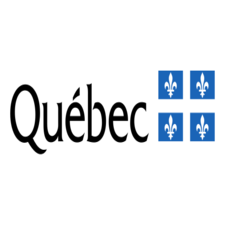Geomorphological process
Type of resources
Topics
Keywords
Contact for the resource
Provided by
Formats
Representation types
Update frequencies
status
-

As part of measure 2.6 of the 2013-2020 Climate Change Action Plan, the MELCC financed two projects specific to the St. Lawrence river section and aimed at supporting municipalities facing the risks of erosion and flooding. The team of the **Laboratoire de Géomorphology Terre-Mer du Département de Géomorphology de l'Université Laval** has set up an essential geospatial information base for assessing the risks associated with the erosion of the banks of the banks of the St. Lawrence river section. The user will be able to find there (i) the mapping of the classification of the shore (types of banks and their artificialization), (ii) the degradation conditions of artificial structures and (iii) the state of erosion of natural or artificial segments. The sectors most vulnerable to erosion have also been mapped and documented with image quality sheets. These sheets present the characteristics of the shoreline and the main natural (currents, ice, etc.) and human geomorphological processes (currents, ice, etc.) associated with bank erosion for these nerve sectors, in order to better represent local dynamics. The geospatial data associated with shoreline mapping, the quality sheets and the project report, which includes the description of the methodology and results, are available for download. The second project is led by Ouranos and aims to reduce the vulnerability to floods and erosion associated with climate change for communities bordering the St. Lawrence river section. The user will be able to consult two reports resulting from this project: a. Technical report on future trends in the main hydro-climatic factors that influence natural flood risks and bank erosion processes along the fluvial section of the St. Lawrence. The objectives of this report are to draw a portrait of these hazards, covering both the recent past and future projections (2050 and 2080). These factors range from large-scale phenomena, such as the spring flood of the St. Lawrence River or marine uplift, to local phenomena such as freeze-thaw processes that affect clay cliffs and microcliffs. b) Summary of the needs mentioned by the actors of the regional consultation tables (TCR) to adapt riparian communities to the risks of bank erosion and flooding. This report presents a portrait of the participants of the four workshops organized in the fall of 2018, the approach used for the consultation and a summary of the needs expressed. The lists of participants and the detailed reports of each workshop are also included in the annex to this document. The TCRs consulted during these workshops are those of Haut-Saint-Laurent — Greater Montreal, Lac Saint-Pierre, the fluvial estuary and the TCR of Quebec. Following this characterization project, a [Study of bank mobility issues in the St. Lawrence river section] project (https://www.donneesquebec.ca/recherche/dataset/etude-d-enjeux-de-mobilite-des-berges-dans-le-troncon-fluvial-du-saint-laurent) was carried out. **This third party metadata element was translated using an automated translation tool (Amazon Translate).**
 Arctic SDI catalogue
Arctic SDI catalogue